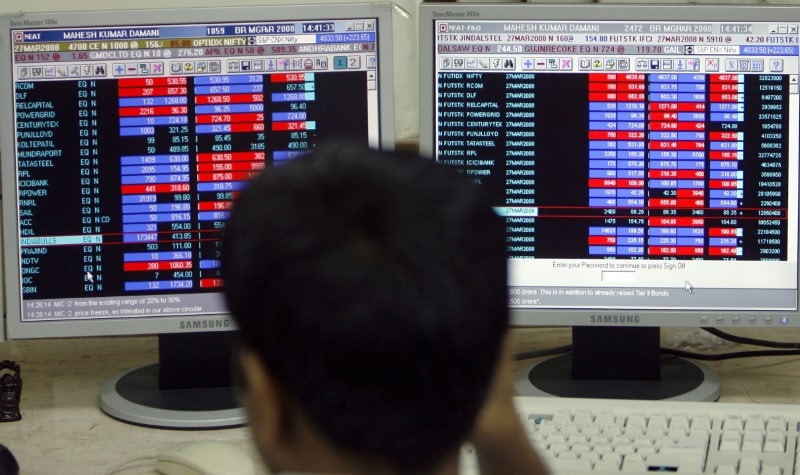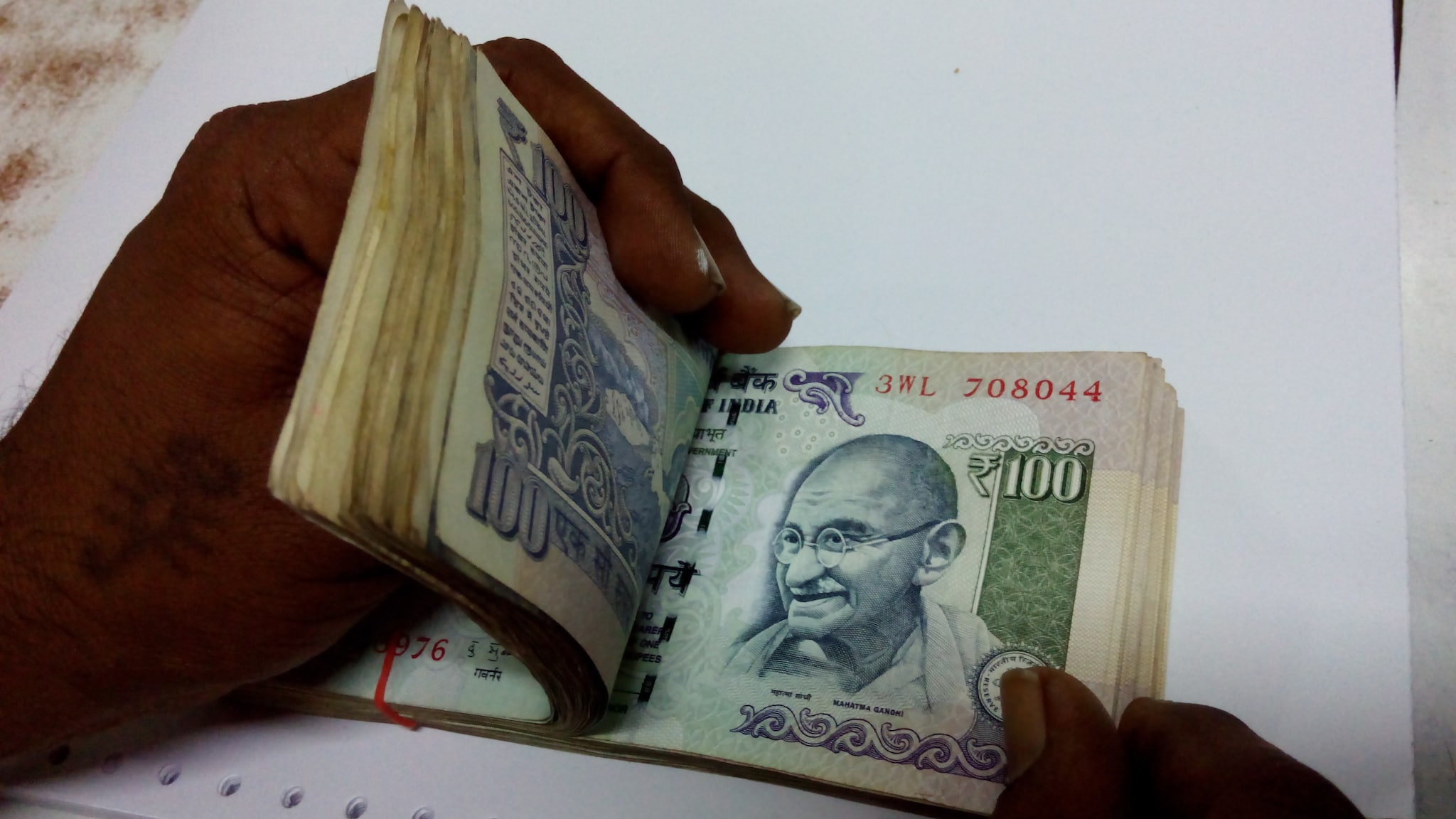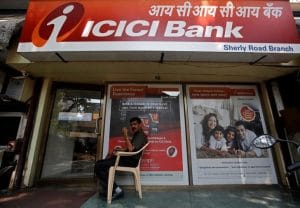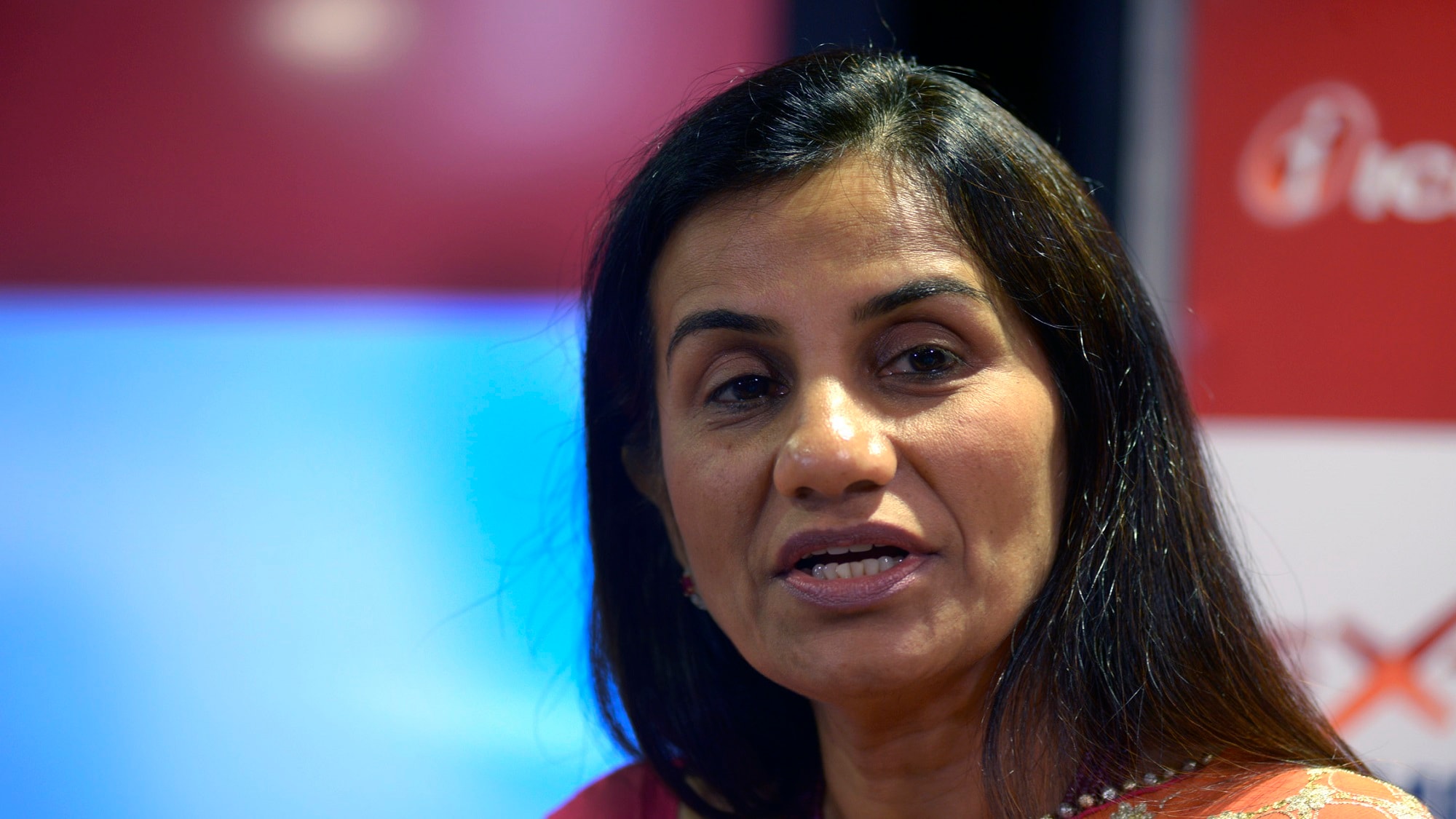Planning to re-balance your mutual fund portfolio? Here’s how you can do it

KV Prasad Jun 13, 2022, 06:35 AM IST (Published)
 Listen to the Article (6 Minutes)
Listen to the Article (6 Minutes)
Summary
The last few weeks have been a roller coaster ride in financial markets. A big fall in equities, rise in interest rates, weakness in the rupee and volatile global cues have taken a toll on the street and probably on the mutual fund NAVs (net asset value) as well. This is not a time to …
Continue reading “Planning to re-balance your mutual fund portfolio? Here’s how you can do it”
The last few weeks have been a roller coaster ride in financial markets. A big fall in equities, rise in interest rates, weakness in the rupee and volatile global cues have taken a toll on the street and probably on the mutual fund NAVs (net asset value) as well.
This is not a time to panic, but perhaps a time to recheck your short-term goals and fund requirements. Anupam Guha, head of wealth management at ICICI Securities and Hemant Rustagi, a personal finance expert, help you take stock of your portfolio.
Watch: Volatile market impacting your mutual fund portfolios? Here’s how you can manage them
Here is the full transcript
It really has been quite a nerve-racking change, from the highs of August to the manner in which September and October have played out. What are your first thoughts, how have you read the volatility? We kept thinking that it is going to pass, but it has been a slightly more prolonged stretch this time.
Guha: Absolutely. Interesting times for sure. Markets have been on a spin and really the global factors have not really helped, be it crude or the sliding rupee. In the context of that, I think what one would need to do is take a closer look at their own existing portfolios and see how would they want to really strategize going forward for the next 12 months. So that clearly I think one would need to really look at.
I guess for someone who does not need any money right now, and who has a longer view, five years onwards, for them no need to bother, right, just switch off your TV, mobile phones, everything and just stay with your investments, is it that environment?
Rustagi: I think that would be the best thing to do. However, it is very important to be very clear about how you have built your portfolio. If you have built your portfolio, aligned your investment to the goal, especially the guys who are investing on a regular basis, if you have done that in the past and looked at your asset allocation properly and within assets, for example if you look at equity, you have kind of very well balanced portfolio in terms of allocation to largecap, midcap, smallcap, and your funds have been performing consistently earlier, I think you just need not worry about it.
This is the time obviously, it can be very challenging time, but this is not the time as you rightly said not to panic. Stick with your investment goals, stick to your investment process and if you are investing through SIP or regular investment, continue with that. There is no reason for you to stop it because we have seen this kind of falls before. The reasons may continue to change, or you may still see markets going down from these levels, but that is the nature of the market as such. I do not think an investor needs to be worried about it.
However, if you are not someone who planned your investment well, it is time for you to go back to the drawing board and see where exactly is your portfolio, did you make your portfolio very aggressive in terms of allocation to midcap and smallcap, maybe that is a time to start rebalancing it. However, if you have planned it properly, no need to worry.
What kind of queries are you seeing coming in from clients, are people a lot more stable this time, are they willing to stay the course, what kind of questions are coming up?
Guha: I think what has really come out is that people are wanting to look at their own portfolios and see whether they have really done the asset allocation right. I think in last one year when markets really rallied well, smallcap and midcaps had good gain, people went overboard and really it is here that people are wanting to go back to basics and see in context of how they have structured their portfolio to their goals and cash flows, have they been able to manage it well.
I think most of the queries that are coming in today is essential that when we look at the markets, and it has been bipolar, till sometime back, maybe a month back, you had the Sensex or the Nifty really holding fort and was largely because largecaps were holding versus in case if you had built a portfolio which was heavy on midcap or smallcap, there was divergence, your portfolios were down minus 20 percent while the overall headline number looked good.
Now when the largecaps also have taken a beating, people are asking themselves that how do I really plan the next 12 months. So most of the questions that we are receiving at our end are largely in that context.
Let us take up the asset allocation question first up because that is the most important one. Ideally speaking it should be based on your risk profile, your goals, your age factor, things like that, but at times we do go overboard. In a good market, everybody is telling you that you should really load up on equities, so there would be portfolios which are very heavily equity oriented right now where people did not want to put too much of money in fixed deposits or even in debt mutual funds. How should one begin the rebalancing, is this the time to look at let us say balanced funds or maybe pure debt funds or is this the time to go a little more aggressive in equity and look at buying in equity because you are getting lower prices today?
Rustagi: It is never a great idea to look at what is happening in the market and start rebalancing your portfolio. There has to be a reason for that. There are investors who very systematically rebalance their portfolio at the completion of one year, one year because it makes your gains tax efficient.
So if someone who has been doing it regularly, and the fact that every time we always recommend that when there is a change in the asset allocation to the extent of 10 percent or more, maybe that is the time you start looking at rebalancing. So, I would tend to agree that if there is someone who is looking at still long term, still has the time horizon good enough to be in equity, this is the time to rebalance which means you start allocating more.
You buy more if you have 10 year long-term view on equities?
Rustagi: Absolutely. You start putting more money. I am not saying that the markets cannot fall from here, so, you have to do it gradually. You just cannot put all your lump sum here, maybe in two or three tranches you can do it, but definitely a good time for people to start increasing their allocation to equity not because the markets are down, just because you are following the discipline of rebalancing your portfolio.
However, for someone like I said earlier, who has aligned their investment to the goal, you still have a time horizon of retirement for 15-20 years, for child education for 10 year plus, as long as I said earlier, if you are very clear about the kind of funds that you have and your asset allocation is in-line with that, no need to make any changes.
I would not want someone to put two or three year money to take advantage of the market. So I think that is something which can be very risky strategy.
But the fact is that not all of us are as organised, who have got their long term 15-20 years goal sort of charted out. So for that category, people who are now looking at their portfolios wondering do I have too much equity exposure, should I go to a balanced fund, should I do hybrid funds right now, what should the approach to asset allocation be if you are looking at your MF portfolio and obviously a lot of it is down in losses not just on the equity side, even on the debt side because we have had problems with respect to how credit funds are doing and maybe there are losses there as well as interest rates have shot up?
Guha: I think it’s a very valid point. I think what one would need to do is the overall asset allocation, but one would also need to look at the macro and see with the changing times is your portfolio aligned or not. I will just give you a few examples here, in equity what really has happened, why is it that suddenly we think that what kind of stocks would do well, is it the time for defensive, is it that you want to get into more capital efficient businesses with lighter balance sheets, cleaner businesses, more services oriented, so IT, pharmaceutical, the entire financial services pack, within that the people went overboard with maybe an NBFC kind of a model to saying that are there headwinds from a regulatory perspective.
There were policy changes that are being made by Reserve Bank of India (RBI), by Sebi, by the government, and in context of all of this, what kind of sector one would need to play and within that how do you build a bottom-up stock portfolio or a mutual fund portfolio as well. So that is on the equity side.
Likewise on the debt side as well, we have been saying it for quite some time that this is not the time to really play duration, a lot of people also in the last one year took aggressive bets on credit funds and clearly we have seen there has been a liquidity crisis, there has been a crisis of confidence and with that clearly we have seen spikes happening in debt as well where people are sitting in losses.
In the context of all this, one would really need to rebalance their debt portfolio or at least take a closer look at their debt portfolio, their equity portfolio, and then do the entire asset allocation.
As you said if a person is young and still has 10-15 years of investing life ahead of him/her then equity is still a great asset class to be in but when you do see losses like this and I am just reading out some of the names, one month or three months; for instance if I look at some of the funds, the HSBC Infra Fund, LIC Mutual Fund Banking and Financial Services, HSBC Smallcap, Birla Sunlife Smallcap and even the Motilal Oswal Midcap 30 – a lot of these funds last one month have been down 18-21 percent. In three months more names are coming in, the Sundaram Smallcap, Birla Sunlife Smallcap. The cuts are between 15 and 20-23 percent even for three months. I know that one month and three month is not the scenario to look at but in your analysis have you come across any immediate funds which have fallen a lot where one needs to rethink your strategy or your investments?
Rustagi: What is very important as far as equity portfolio or equity mutual fund is concerned that you cannot be looking at absolute return. The problem is that when you are investing in an equity knowing fully well that this is an aggressive asset class and it can be very volatile and in times like this when the market has fallen so much especially the mid and the smallcap, you have to look at relative performance and that is why it is very important for you to not only look at asset allocation but also within an asset class.
Like I said earlier, you need to make sure that you have a fairly well diversified portfolio; for example, the bread and butter of your portfolio has to be large and midcap especially the largecap; 50-60 percent has to be in that and the remaining can be in mid and small.
So unless and until you have a look at that you will see a portfolio, exactly as I was saying, that if you have become very aggressive in the last one year thinking that because midcap and smallcaps are doing very well and you have enhanced your allocation to those funds you will see this kind of performance. In terms of performance why you need to look at relative performances; look at the average of peer group and if that segment itself has fallen 20-25 percent and your fund has fallen 18 percent, the fund manager has done relatively good job but the fact is because you chose to be in those segments you decided to take that kind of risk.
If you find yourself holding a couple of midcaps, smallcaps aggressive funds which are down 20-25 percent over the last few months. Is this the time to even try and move out or do you just stay put, stay the course. What is the best advice for this category of people who are looking at losses in their midcap and smallcap funds?
Rustagi: Invariably what happens is even if you are owning multicap funds you would have seen the midcap part of that getting impacted because it is bundled you do not see the impact so much.
So if you have invested directly into midcap and the smallcap, like I said earlier, you need to go back to the drawing board and see whether you have made your portfolio very aggressive at some stage because in the last one month even the largecaps falling. So even there you can enter at a lower level today.
So it is important now at least to look at what is your allocation to different segments of the market and then start rebalancing it. I think it is very important for a long-term investor like I said earlier 50-60 percent has to be in largecap and for a common investor the best bet is a multicap fund.
Look at a fund which has been performing very well vis-à-vis the peer group and its benchmark. Go in a multicap fund because the fund manager has a flexibility to move allocation and is also committed to invest certain percentage of the portfolio to the largecap. So as an investor you may find it difficult to rebalance again and again and it is not tax efficient also. In the multicap, I think it works very well.
Your thoughts on the way you will construct a mutual fund basket right now. Do you concur that largely in this kind of a market environment next 12 months your will give more weightage to largecap funds?
Guha: That’s the point and also when one is looking at the entire asset allocation, I think what — and it is slightly outside of the MF purview as well — is to look at the asset classes together and how does it really look like, for example we were talking salaried employees; many of us have large portions of our debt allocation to provident fund.
Have you looked at that and then change charted out your asset allocation because people tend to only look at the mutual fund portfolio and try and do an asset allocation which may not be the right thing to do. You need to look at all your asset classes be it gold, be it real estate, be it debt, be it equity and within that one will need to look at how the portfolio look likes.
The moment for a salaried employee you put in PF as a component in debt you will realize that maybe on the debt side that is taking almost 50 percent of your overall allocation and hence maybe you may want to look at that would you want to reduce MF data allocation and move in a bit more on the equity side given that valuations have also become attractive for us to invest.
Coming to multicap funds, if I look at the performances, quite a few of the large AMCs are offering these products and for the one year return many of the midcap funds at least – multicap funds are still positive barring the Motilal Oswal Multicap 35 which is still down about 10 percent in a one year timeframe. What are your favouite picks here?
Rustagi: If you look at this specific fund that you just mentioned about even though it has fallen more than the peer group but this has been a great performing fund, this is a fund which takes basically a concentrated bets and the problem with concentrated bet or focus portfolio is that if there is a fall and in some of the stocks you have taken a heavy exposure do not do well. For example, in this portfolio you see Bajaj Finance, Eicher Motors and couple of others, Indigo was also there, there when you see the fall you will see it more than the peer group, but then the key factor is when you are looking at multicap as a category, if that is going to be your major chunk where money is going in at least two or three good multicap funds, so all the funds do not perform exactly in the same way. Like I said this fund was doing better than others and there are a couple of other funds like Kotak Standard Multicap Fund has been a very consistent performer.
One can definitely look at that and in that category look at Invesco India Contra Fund for example; look at different strategies within that. So that you see that they do not behave exactly the same way. If you have a similar looking funds in terms of exposure to different sectors, stocks, they will exactly behave the same way whether the market go up or go down and you do not want that to happen to your portfolio. So these are two-three funds that one can look at in this segment.
You mentioned some of the NBFC names like Bajaj Finance and that got me thinking. NBFCs largely and financials have been hit very hard in the current market fall. What would be the advice to someone who did have a bit of thematic fund exposure and has some presence in banking and financial services fund. Your thoughts there. Is it the time to get out or you have already taken a hit, do you stay invested specifically in the banking and financial services funds?
Guha: As a broad theme banking and financials to us look very good – that’s the theme for the future, it is a mega trend given the financialisation of savings that’s happening in the country, given how markets are growing, clearly we think that this is a sector that one needs to be at.
Here within that one need to look at the underlying portfolio and how it has been constructed. Is it NBFC heavy, maybe corporate bank heavy, a PSU bank heavy and within that one need to construct the portfolio. So our take on it is clearly that we favour big banks with large CASA strategies, far more broad-based banks. So those are the themes that we would want to play. Having said that and specific because you mentioned Bajaj Finance, I think the business model is great and as a stock we continue to like that given where the valuations are.
Just coming again to midcap and small cap funds because there is so much of interest. Looking again purely at performance, six months performance or one year performance, the SBI Magnum Midcap has been particularly hard hit, it is down 14-15 percent in the last one year, it is down 20 percent in six months so for those who have holdings here, is there any reason to look at a change or do you think this particular fund can weather this market storm?
Rustagi: I think that particular fund has been doing very well. What happened is some of the smallcap funds stop taking money sometime back. What typically happens is that when you continue to get your money, the fund manager has an opportunity to buy at a lower level, you can average it down but then you stop inflows except SIP where the asset will still continue.
The lump sum money has not been coming in there. So it can happen at times when the fund performance will get impacted because the inflows are not coming in but I believe that is a good quality fund.
The problem with the midcap and the small cap especially is that it is very stock specific. So I think it is very important for investors to go beyond the numbers and see what kind of diversification level and what kind of companies which are there. The problem with these especially in the smallcap space is that most of the stocks suffer from liquidity issue. So when the market fall, there are no takers for those stocks and that is why you see the fall much more there. It is important to not look at only the performance number, go beyond that, look at the level of diversification, look at the kind of stocks which are there and unless and until we are comfortable, if you cannot do it yourself, take help of somebody. But it is very important to go beyond the numbers and look at the quality of stocks especially on the midcaps and smallcaps and then take it.
Do tell us your favourite names as well and this is obviously for the investors who can take higher risks and who can ride out this period of volatility, those investors who are looking at fresh deployment in midcap funds or smallcap funds even today, which are the one-two names you would still go for?
Rustagi: In the midcap I would say, one can look at HDFC Midcap Opportunity, Kotak has a good fund Kotak Emerging Equity and L&T has L&T Midcap Fund. In the small cap I would say HDFC Small Cap has been doing very well. It is an excellent portfolio. L&T Emerging is another one that one can look at and Reliance Small Cap are the three funds in small cap one can look at if someone is looking at investing today.
Your largecap bets? Because as we began the discussion, that has to be the lion’s chunk of anyone’s portfolio so the best top three large cap funds for you right now.
Rustagi: I would say one is Reliance Large Cap, ICICI Bluechip is another one and Birla Sun Life Frontline Equity.
If you have some fund requirement that is coming up, you are a long-term investor but you know that over the next six months you will require a couple of lakh of rupees for some short-term goal then what is the best way of going about it. Remain invested and simply redeem whenever you need the money or is it a good idea to move some of that money to a liquid fund today itself or a balanced fund. How do you start withdrawing, causing minimal damage to your holdings – that’s the first question? The second question is if you are a self-employed professional and there are lump sum payments coming in and the market is down then what you do. Do you invest in one go, do you do a SIP. Your thoughts there?
Rustagi: Let me begin with investment part especially for someone who is self-employed and if he is not the guy who is investing on a regular basis through SIP because the income can be erratic at times.
So my recommendation then would be that maybe 40-50 percent lump sum and the remaining 40-50 percent depending on how much you invest lump sum through systematic transfer plan because in the next six months or so you are going to see elections you will see the market volatility continuing, so I do not think it will be a great idea to put 100 percent at one level. There is systematic transfer plan that can be done. So do a mix of lump sum as well as systemic transfer plan?
As far as the withdrawal is concerned normally what we recommend is that when you align your investment to a goal, six months to one year before you complete your time horizon for that start withdrawing your money and if someone has not done that maybe it’s time to go back and look at the portfolio which are the fund that can be withdrawn.
This is not a great time to take out equity funds. If you have some portfolio which has hybrid fund where equity exposure is much lesser, you may have aligned it to some other goal. There is no harm for the time being to take that money out provided that that has already become long-term capital gain. Look at those factors and then start withdrawing from those.
However, if you have a portfolio which is 100 percent equity, you have no option but to start moving it even there I would say maybe if you need Rs 100 you do not have to withdraw Rs 100 today. I am sure there are going to be bounces in the market and those are the time you can start withdrawing some money but you need to start doing the process now.
Your thoughts on the lump sum versus SIP argument for the moment if someone has got a bulk of cash coming in and withdrawals because that is very important. We do not think about what our withdrawal strategy should be and then we get caught up in market volatility and we end up missing quite a bit of cream of our investment?
Guha: People have realised that there are a lot of moving parts in the economy, in the overall global market and as we see the next six months with state elections coming in, crude — today the challenge with crude is that there isn’t supply and the US supply would come in by next year only given the sanctions in Venezuela, Iran etc.
So with all of this in mind at least I would suggest that maybe we have put in 1/3rd of the money has lump sum at this point of time and staggered the rest of it over the period of the next six-eight months from an equity allocation perspective.
In terms of withdrawals especially for somebody who is self-employed or has already plans made; if you have a debt allocation and Rustagi mentioned in case if it is outside of or it has already become a long-term capital gain, one would need to look at the overall portfolio and see if you are able to take out money from there. Therefore, my advice would be that you need to move your money into a fund like a liquid fund and wait for the next 3-6 months as an when you need the money.

Elon Musk forms several ‘X Holdings’ companies to fund potential Twitter buyout
3 Mins Read
Thursday’s filing dispelled some doubts, though Musk still has work to do. He and his advisers will spend the coming days vetting potential investors for the equity portion of his offer, according to people familiar with the matter

KV Prasad Journo follow politics, process in Parliament and US Congress. Former Congressional APSA-Fulbright Fellow










 Listen to the Article
Listen to the Article  Daily Newsletter
Daily Newsletter













